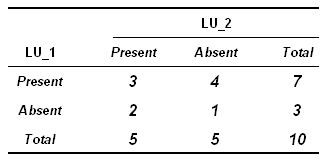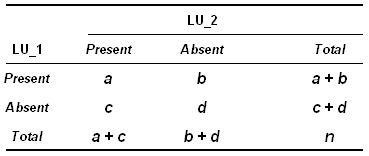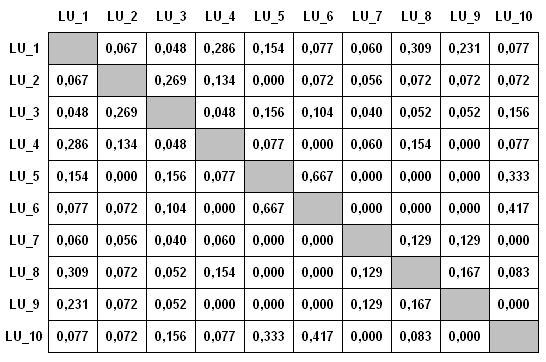|
www.tlab.it
Association Indexes
In T-LAB the association indexes (or similarity coefficients)
are used to analyse the co-occurrences of the lexical units (LU) inside the elementary
contexts (EC), that is to analyse
binary data of the presence/absence type.
For instance, given two LU and ten EC, we can
obtain the following example:

The same data can be represented in
the following way:

Generalizing and using the letters
of the alphabet:

The formulas corresponding to the
six association indexes used by T-LAB are the following:


If, for example, we have calculated
association coefficients of co-occurrence relationships concerning
ten LU, we can obtain a table like the following:

In effect T-LAB produces and analyses analogous tables
of N x N dimensions (where N can correspond to hundreds of
columns), both using Multidimensional
Scaling and Cluster Analysis.
Similar tables are also used to calculate
second order similarities between
pairs of keywords (see the Word
Associations tool).
|